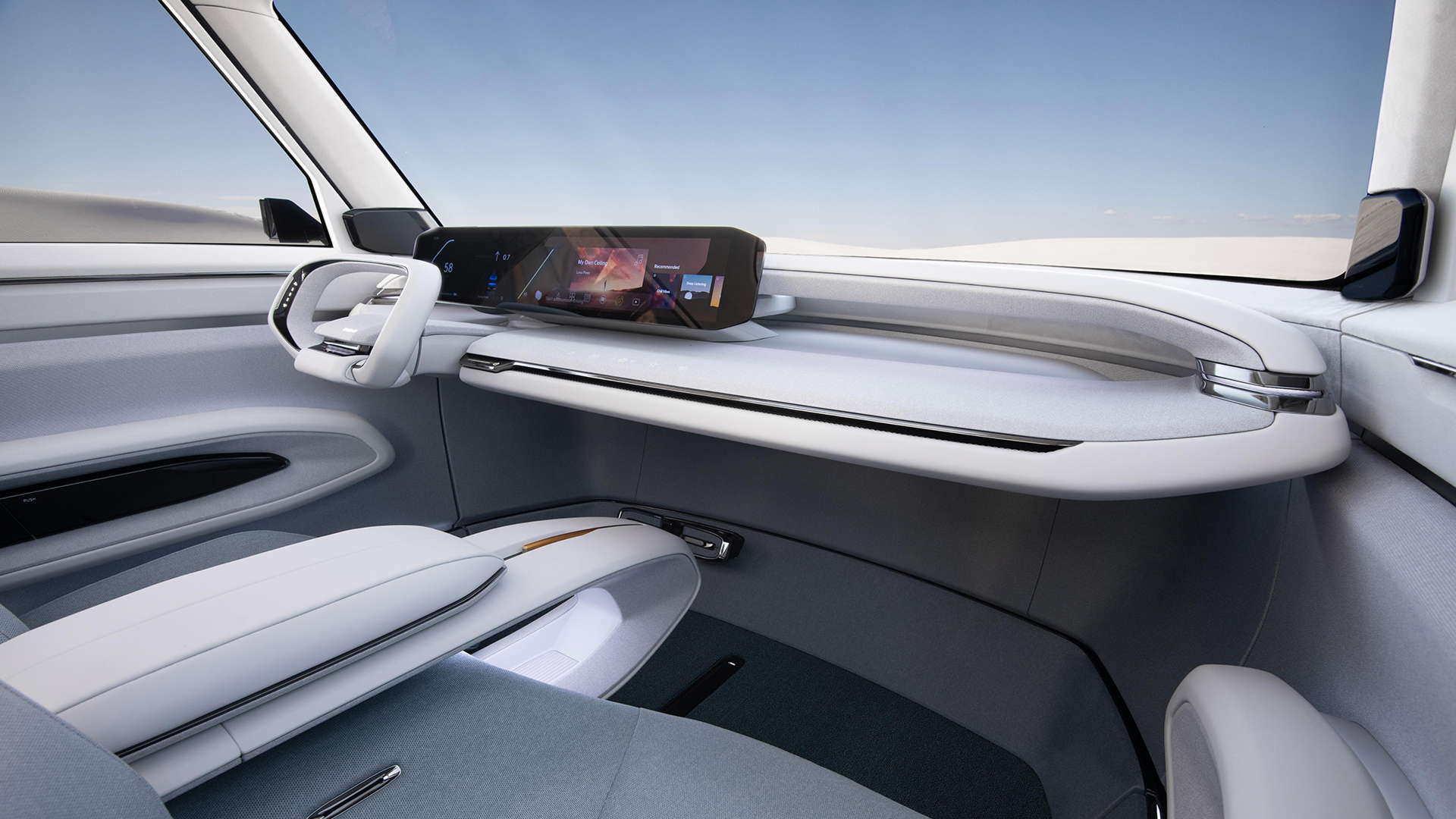
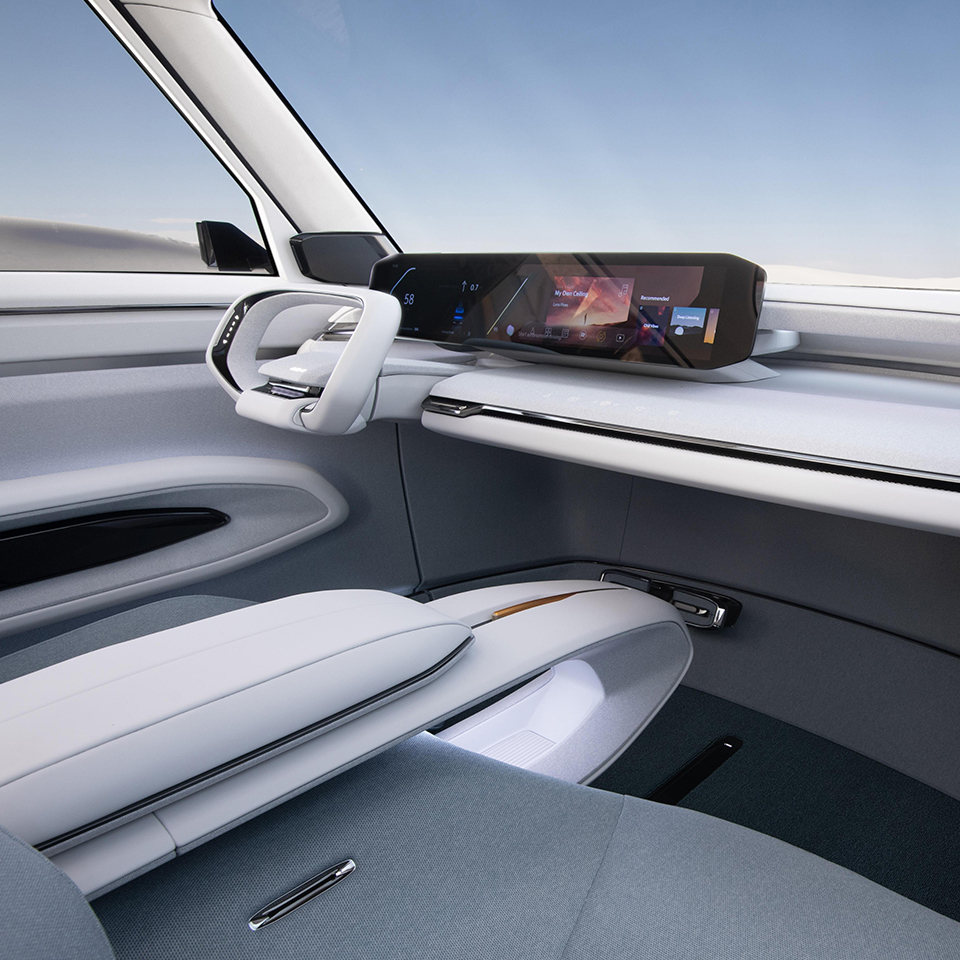


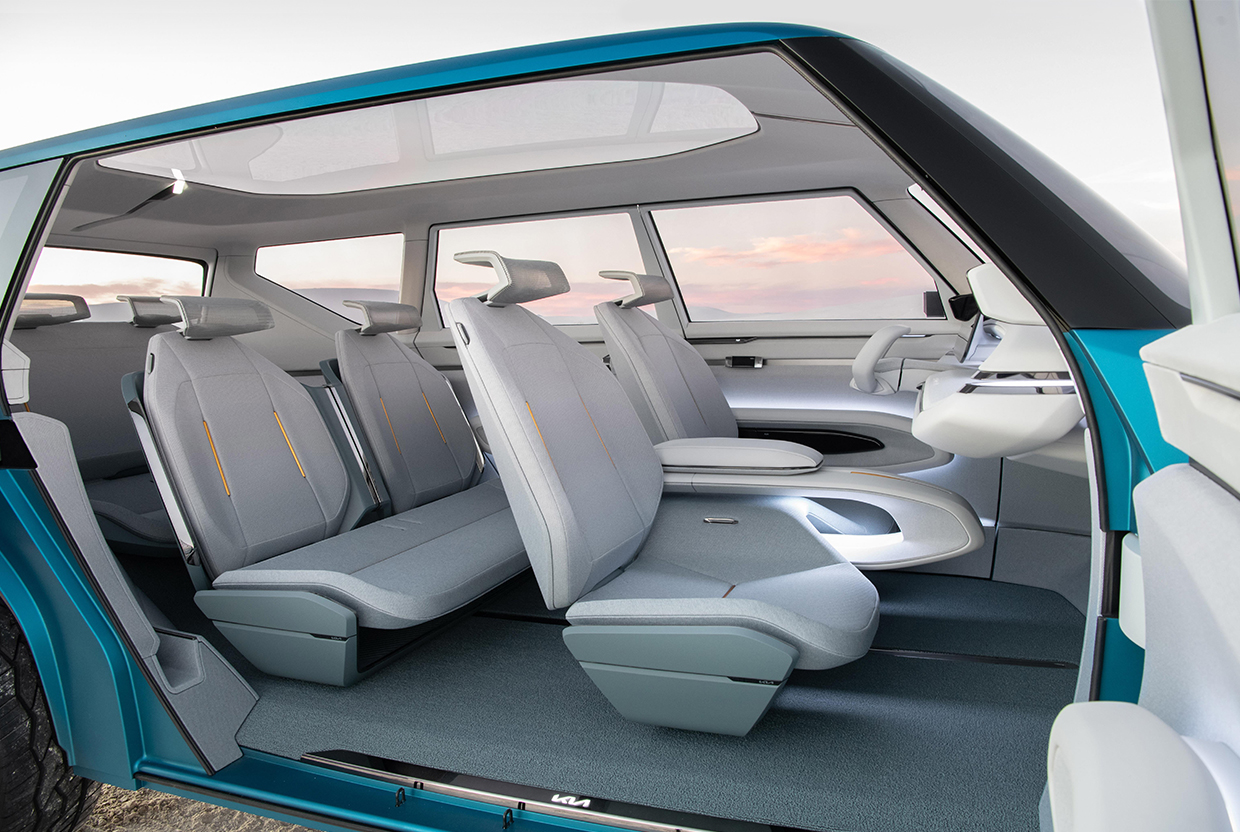
The cabin of a car is both a mobile space and a personal space completely separated from the external environment. Recently, as people spend more time in a car, the interior of a car is attracting attention as another living space. In this trend, the importance of the interior design of automobiles is increasingly emphasized. The reason for this is that as the value of the interior space of automobiles increases and the number of technologies increases, interior design has emerged as a factor determining automobiles’ marketability.
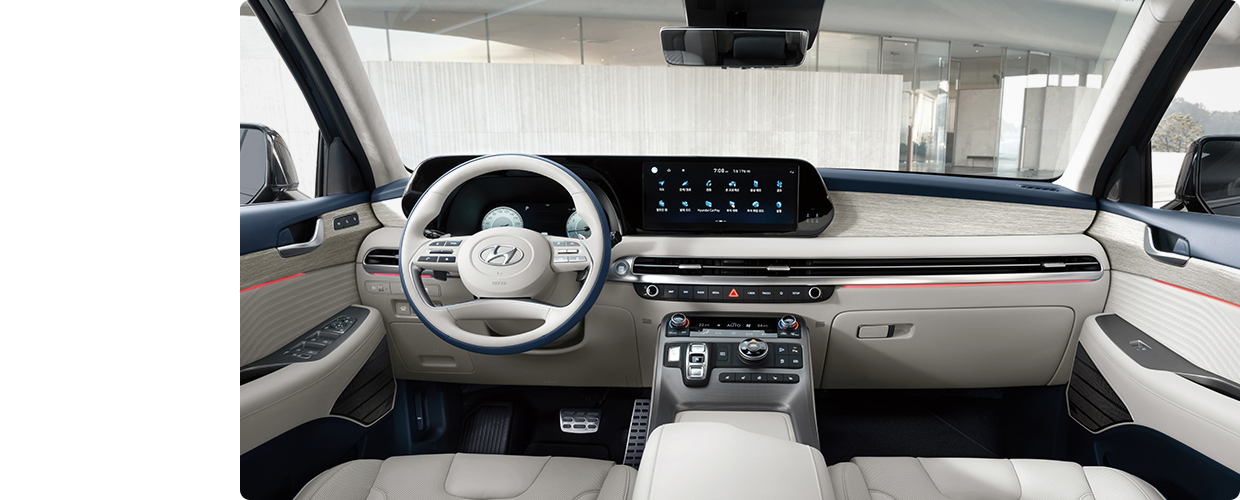
Basically, the interior of a car is composed of an instrument panel, a console, and a door. And the design structure and decorative elements determine the driver’s watch, ease of operation, livability, and openness. It is interesting to note that these various interior features reflect the car’s character. Here, Hyundai Motor Group’s various models - from sports sedans that offer a driver-oriented cockpit to flagship sedans that focus on the comfort of rear seat passengers - show the charm of an interior that is faithful to this purpose.
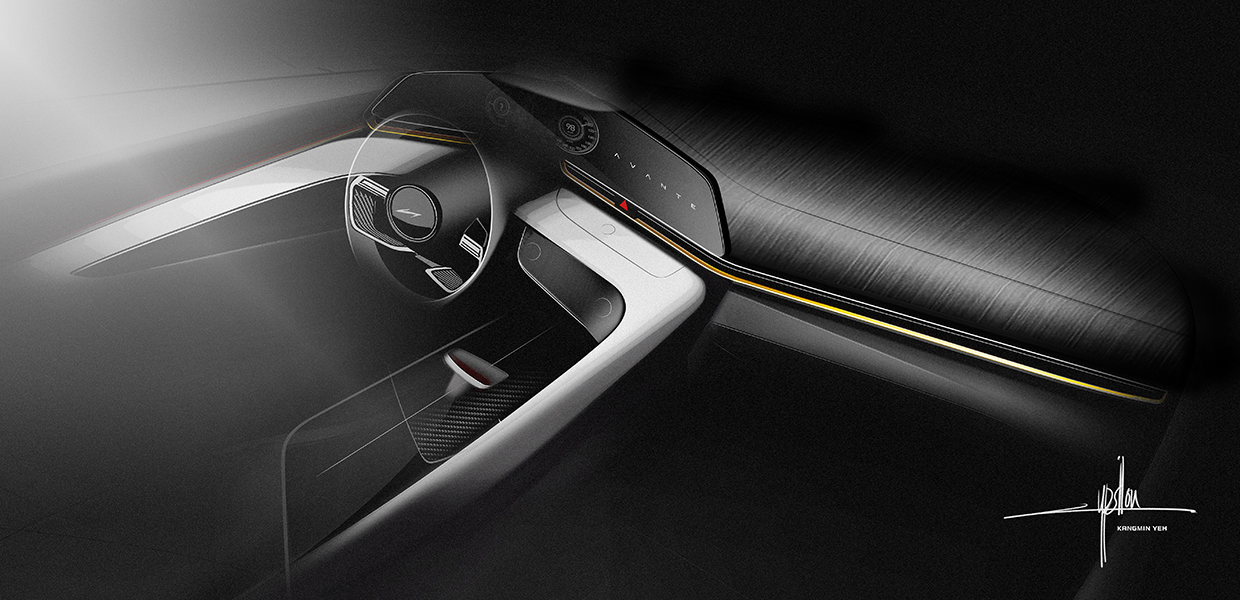
The interior designed for the driver is mainly found in sports cars and sports sedans. Such vehicles focus on an environment where the driver can solely focus on driving; hence they are designed to allow drivers to handle various control systems. The most significant difference in the driver-centered interior is the asymmetrical instrument panel. The center fascia, which usually contains the center display, is bent toward the driver, and the instrument panel wraps around the driver so that the driver’s hand can reach each device without changing posture.
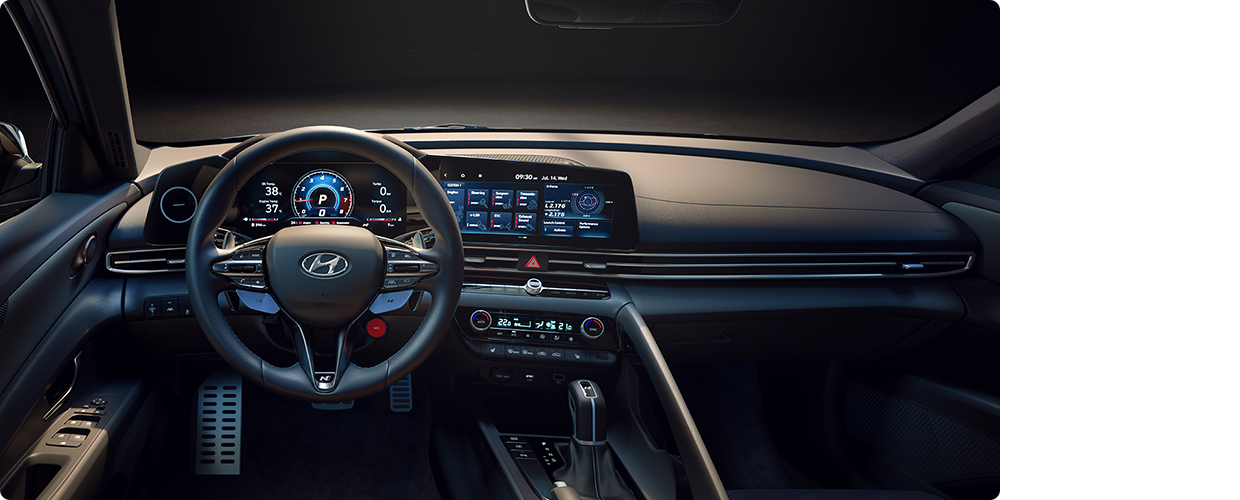
One exemplary model is the Hyundai Avante N which uses a driver-centered interior. Clearly reflecting the character of Hyundai’s high-performance brand N, it shows an interior designed entirely for the driver. Just like the cockpit of an airplane, all interior components are for the driver to emphasize the sporty atmosphere, and the low-designed dashboard is a setting that overcomes the driver’s visibility - the shortcomings of the cockpit structure. In addition, it is composed of items suggesting powerful performance, such as the N steering wheel, N shifter, N sports seat, and N door scuff unique to the high-performance N model. The Avante N provides an environment where the driver can focus on driving, from daily to dynamic sports driving.
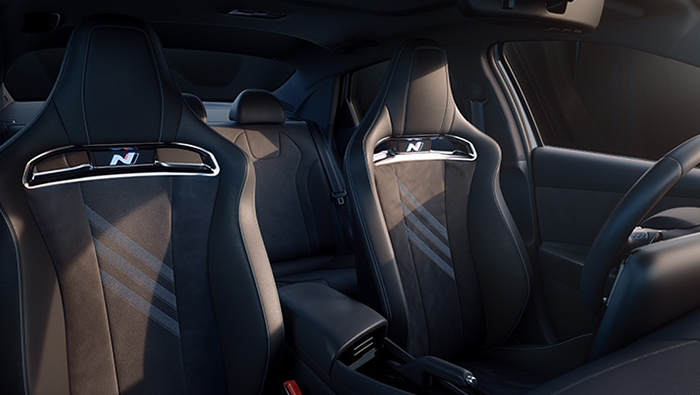
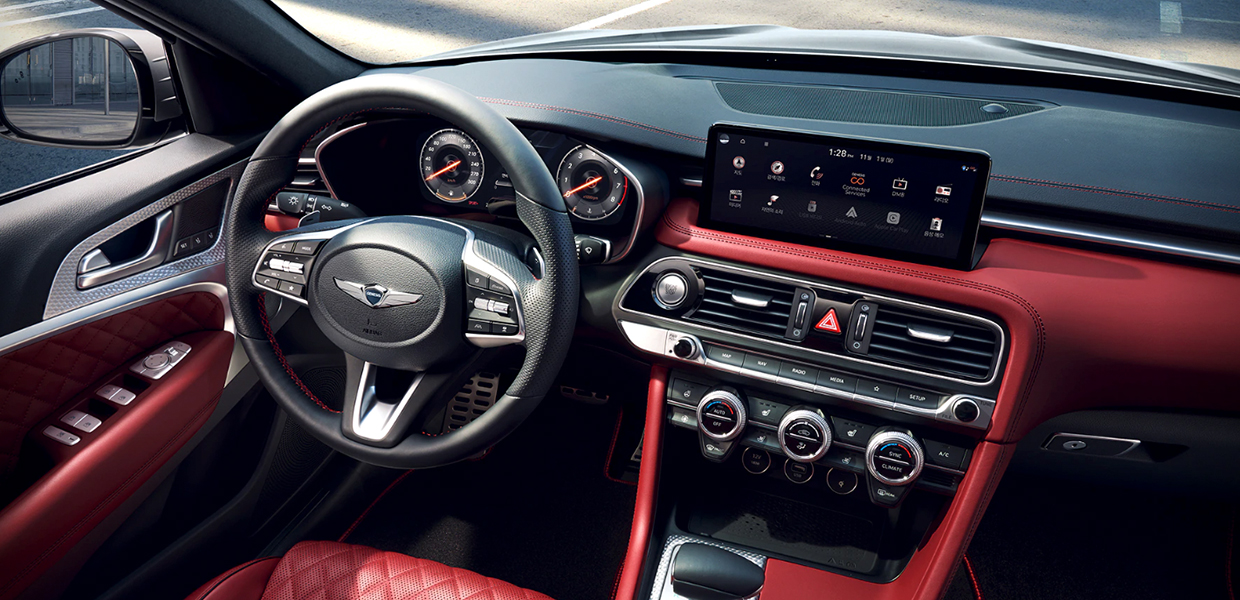
In the interior of the Genesis G70, you can see a more luxurious driver-centered interior. The G70 is a sports sedan representing Genesis. The characteristic of this model is the powerful driving performance based on rear-wheel drive and the driver-centered interior layout reflecting this characteristic. The interior emphasized the high-tech image through the 12.3-inch cluster and 10.25-inch AVN display, and created a luxurious atmosphere through the exquisitely processed aluminum garnish. The most striking part is the center fascia design. The center fascia, which houses air vents and multiple operation systems, expresses an independent cockpit through visually separated modeling. As a result, in the G70 filled with driver-centric design and sophisticated details, occupants can experience an interior that feels luxurious and sporty.
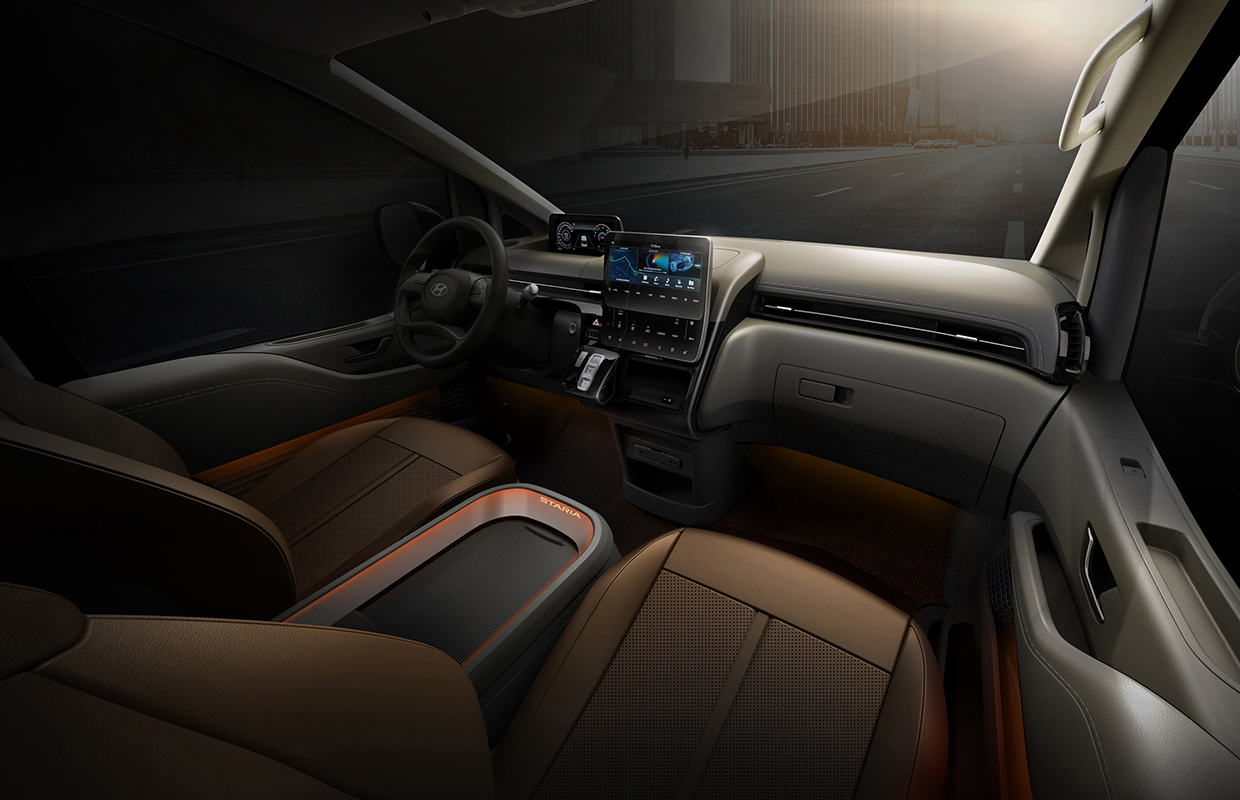
The living space-centered interior focuses on the comfortable and pleasant movement of all occupants. It is usually designed based on a large interior space, and features a layout that maximizes space and a variety of storage spaces considering practicality. Living space-centered interiors, which are mainly applied to MPVs and crossovers, are attracting a lot of attention along with the new trend of mobility that is blowing hard recently. With the introduction of electrification and autonomous driving technology, new mobility possibilities are emerging, and innovative changes in the mobile space are expected.
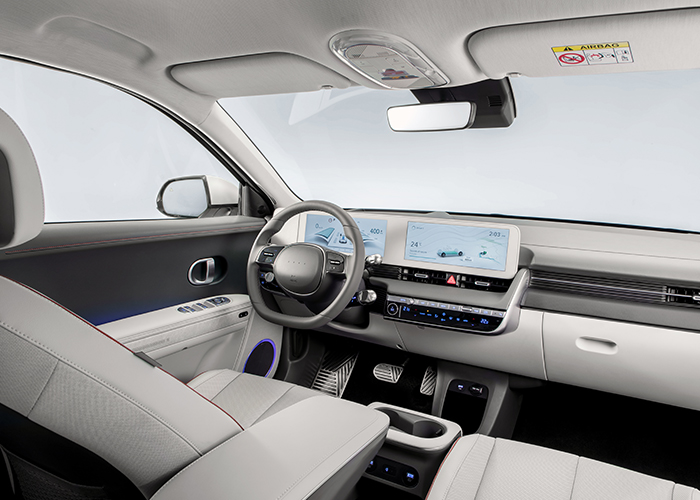
Hyundai’s exclusive electric vehicle, the IONIQ 5, is a representative model that stands out for its interior centered on living space. Reflecting the theme of a comfortable living space, the IONIQ 5 implements an innovative interior space that crosses the boundary between living and moving. The long wheelbase of 3,000mm and the flat floor are the result of fully reflecting the characteristics of Hyundai Motor Group’s exclusive electric vehicle platform E-GMP. The IONIQ 5 provides a space where anyone can move comfortably and live comfortably through a simple interior design.
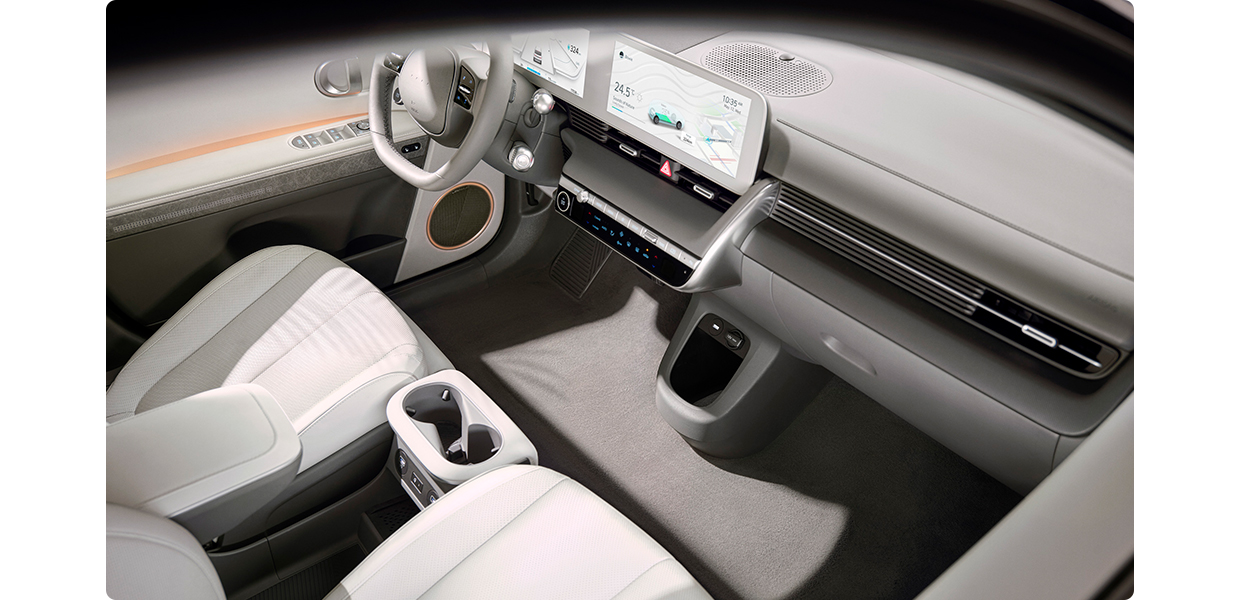
The highlight of the IONIQ 5 interior is undoubtedly Universal Island. The Universal Island is a moving console that can move up to 140mm, and plays a decisive role in blurring the boundary between the driver’s seat and the front passenger’s seat. In addition, the innovative interior can be seen in the relaxation comfort seat that implements a zero-gravity posture, column electronic shift dial, and sliding glove box.
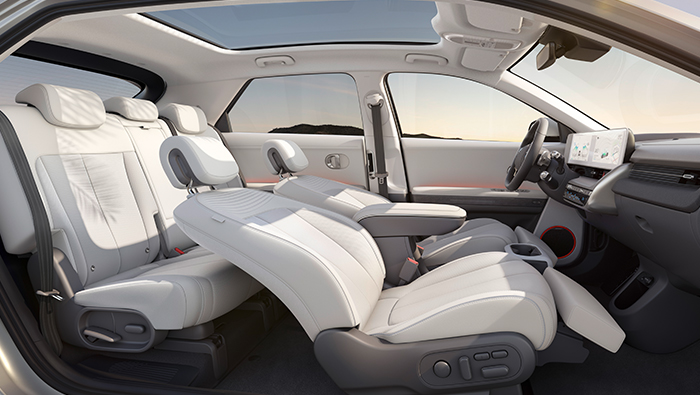
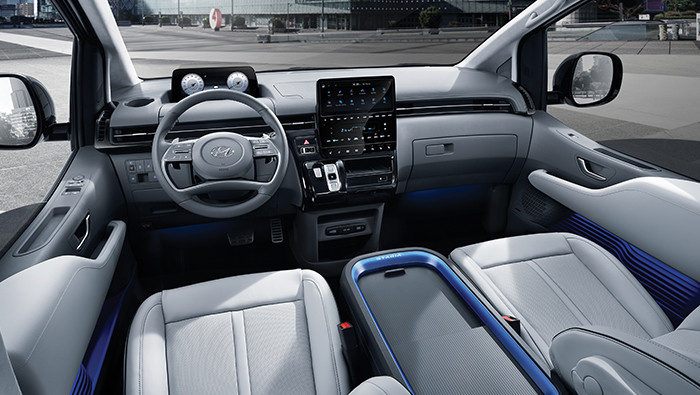
In addition, Staria provides a comfortable interior space for all passengers based on the spacious interior that is characteristic of MPV. Openness and storage space are the most prominent elements in Staria’s interior. Staria is designed to provide a wide open feeling to not only the driver but also passengers through the dashboard and low door belt line that lowers the height and emphasizes the horizontal image. In addition, storage spaces applied throughout the interior, such as trays and cup holders in front of the digital cluster and trays behind the infotainment display, show Staria’s intention of ‘comfort for all occupants’.
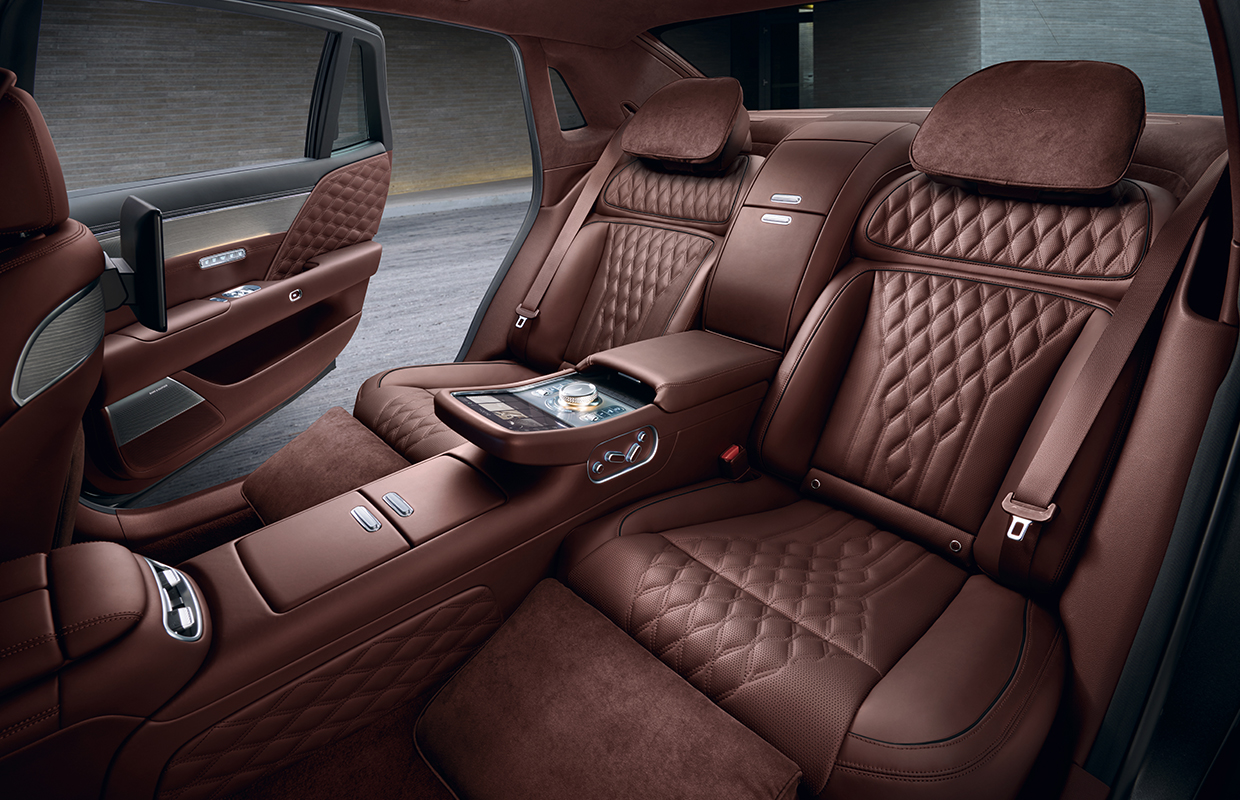
The interior space centered on the rear seat can be found in the flagship sedan representing the brand, especially the long wheelbase model specialized for its chauffeur-driven character. In line with the purpose of being a mobile space for VIP customers, its cabin emphasizes spaciousness and luxurious finishes. In addition, an independent structure that considers the privacy of VIP customers is also a typical characteristic of the rear seat space-centered interior. Recently, the interior centered on the rear seat space is evolving into a symbol representing the brand’s technological prowess by applying cutting-edge high-tech technology beyond the VIP-friendly structural features.
The rear seat space of Genesis’ flagship sedan G90 consists of a luxurious interior for VIP customers. The elegant interior design and luxurious materials reminiscent of a luxury lounge, as well as the seat design optimized for the spacious rear seat space, provide a comfortable and luxurious mobility experience at all times.
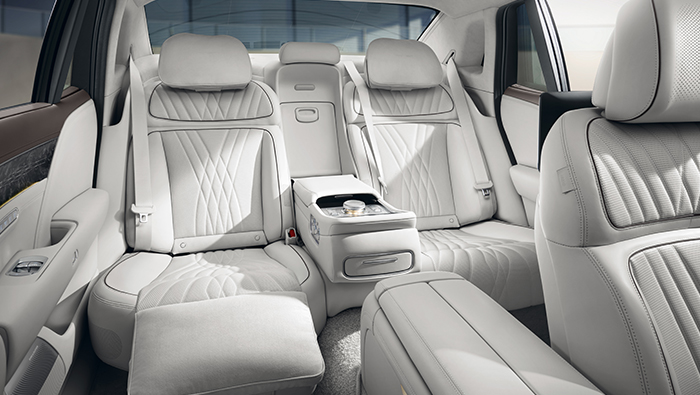
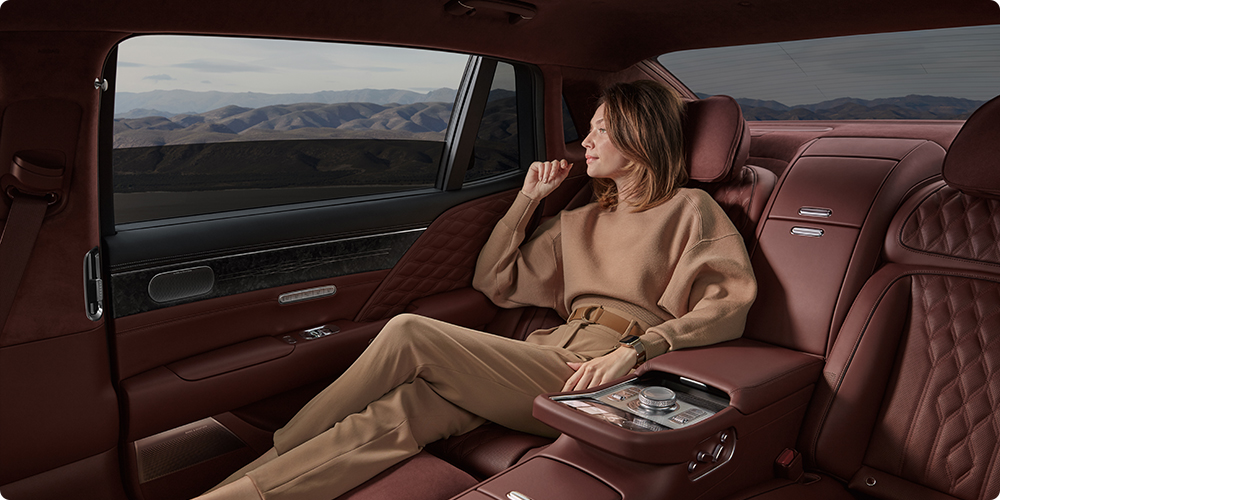
In particular, the first class VIP seat (four-seater) option is characterized by the comfort that comes from the independent left and right configuration. The 8-inch rear seat armrest touch display that can easily handle various functions is the highlight of the G90’s functional interior. In addition, the hidden detail of the rear seat space is a special charm. The seamless design that minimizes the gap between the center console and the seat so that your belongings do not fall out, and the magazine tray that can store frequently viewed books and documents are the charms of the G90 interior that considers VIP customers.
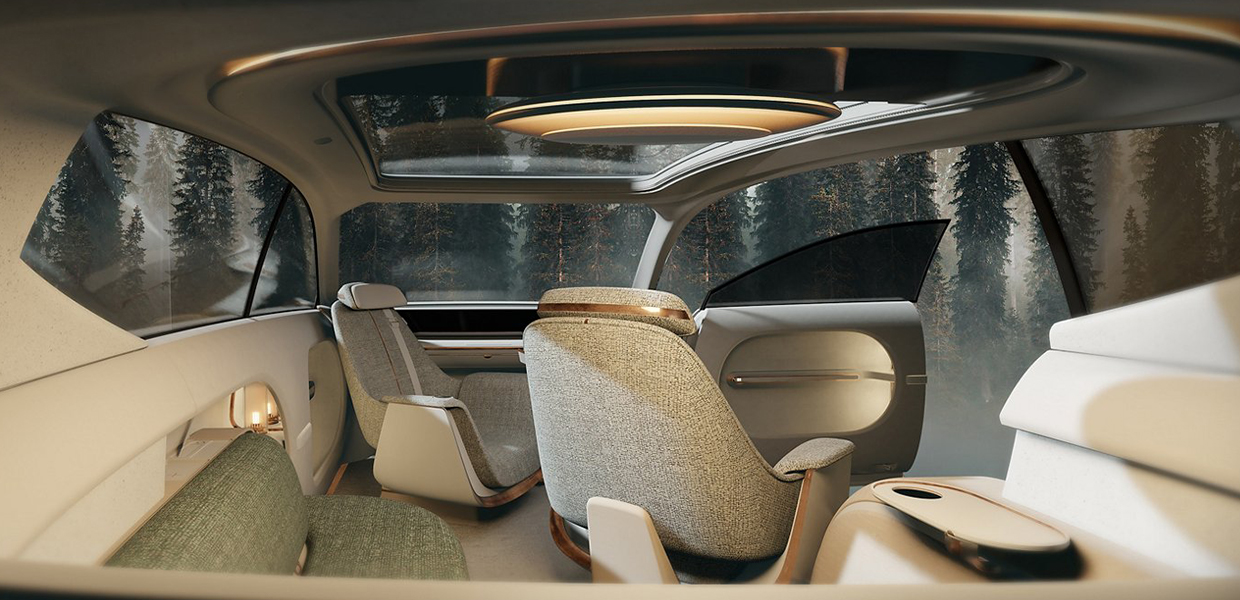
As such, the various models of Hyundai Motor Group are maximizing their value with interiors that deeply reflect their individual characteristics. It is no longer confined to a space for movement, but is evolving into an ideal form desired by customers, such as the joy of driving, comfortable movement for the whole family, and optimization of leisure activities. This change can be easily found in the recently unveiled IONIQ concept car ‘Seven’. Through the flat floor extended flat to the third row and the seat layout that breaks the stereotype of layout, Seven clearly expresses the aim of covering both alone time and family time.
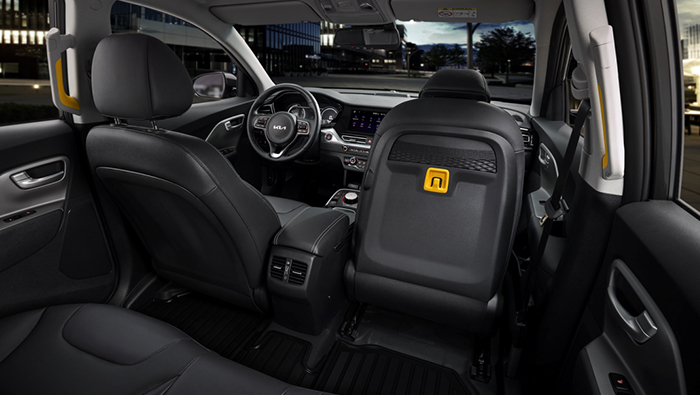
In the future where autonomous driving technology and electrification become common, the boundary between mobile space and living space is expected to become more blurred. This is because the mobility space is rapidly evolving, as in the case of the PBV concept that perfectly meets the user’s purpose such as business, medical care, logistics, and accommodation. The PBV model ‘Niro Plus’ recently introduced by Kia and ‘Ray Single-seater Van’, the first single-seater multi-purpose model in Korea, are the first steps in moving space innovation. Thanks to the change in the movement space that follows the purpose, expectations for future mobility are growing. In order to predict how future mobility will change our lives, we have to look closely at concept cars such as the Hyundai Seven and Kia EV9.
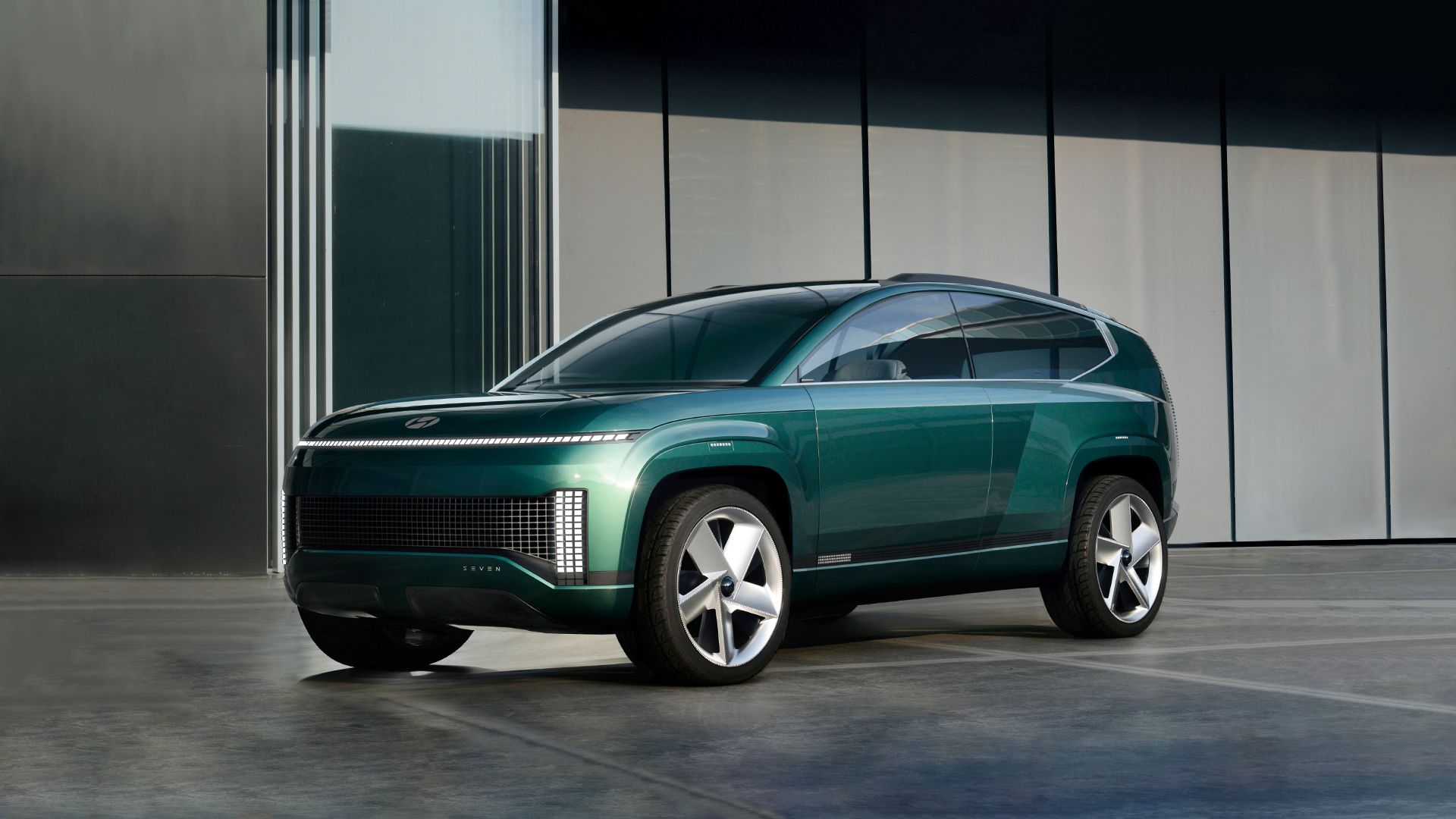
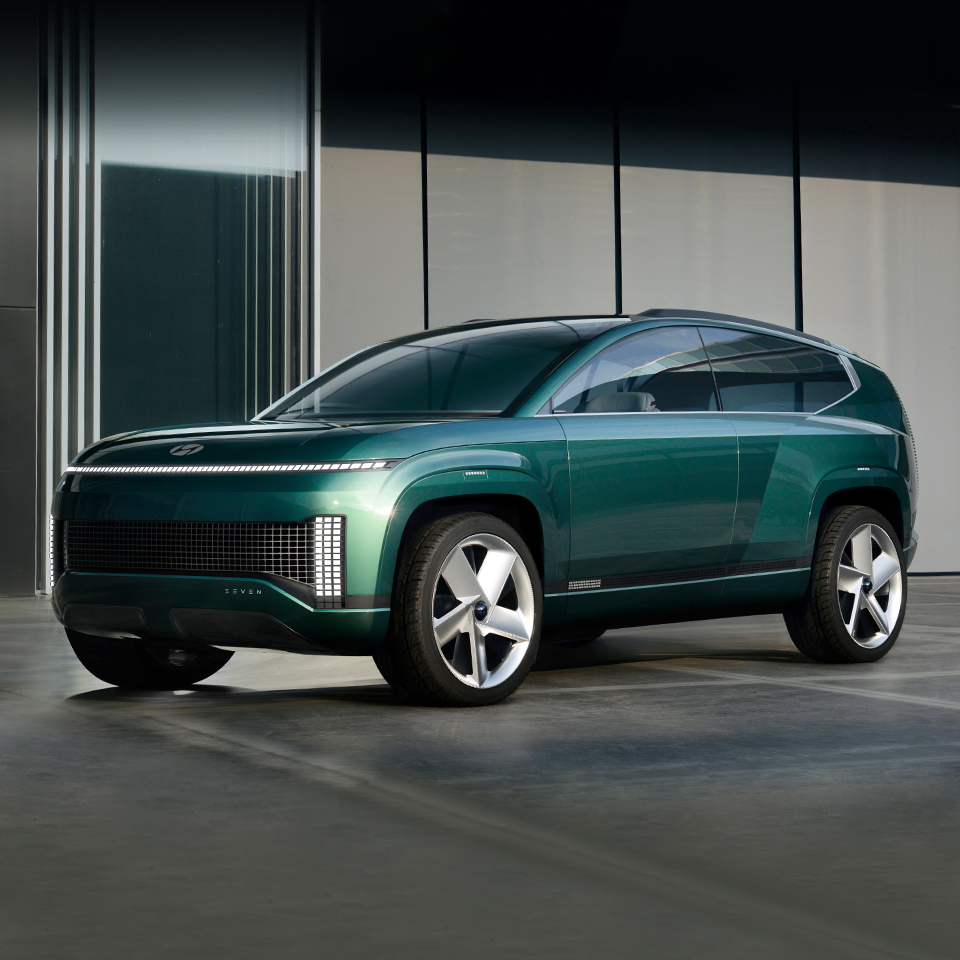
Is It the Era of The Electric Car?
2021.12.28 12min read